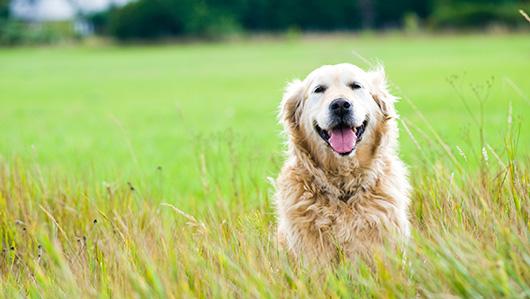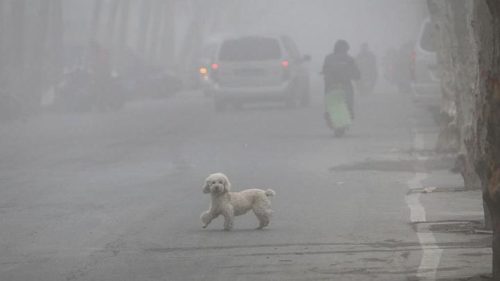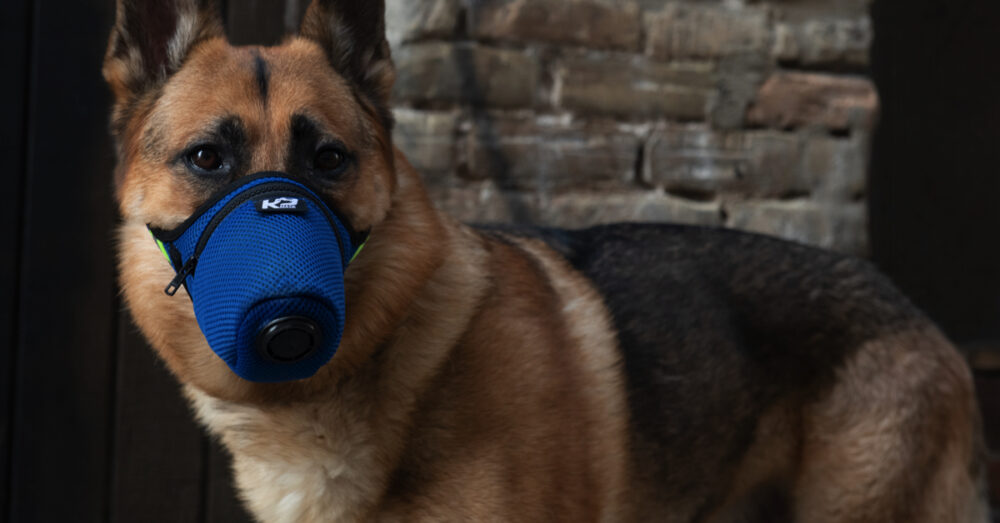
11 Apr How is Air Pollution Affecting our Furry Friends?
We know that people exposed to too much air pollution may have a greater risk of developing cardiovascular diseases or respiratory symptoms such as a persistent cough, wheezing, shortness of breath, tightness of chest, and chest pain. At the extreme end, too much air pollution can lead to premature death in at-risk groups such as the elderly, young children, and people with preexisting cardiovascular diseases. But what about our pets? Are dogs and cats at risk of suffering from air pollution and bad air quality?
 Do our Pets Face the Same Risks?
Do our Pets Face the Same Risks?
Scientists are just beginning to explore the negative effects of air pollution on pets, but most agree that when air quality is poor for humans, it is also poor for pets.
Where Does Air Pollution Come From?
People and animals are exposed to air pollution from a variety of different sources. Fumes from cars and trucks, diesel fuels, coal, gasoline, power plants, construction, and livestock all contribute to air pollution. Pollution can also occur in the home as a result of tobacco smoke, cooking, and heating sources such as wood burning fireplaces or stoves.
Animals in urban areas are at particular risk of smog and exhaust pollutants, while suburban and rural animals can be exposed to the toxins sprayed as insecticides, fungicides and herbicides.
Recent Studies
Studies show that pets living with smokers may face greater risks than their owners, due to the considerable amount of time spent near the floor. A 2011 study found that cats that were exposed to passive smoke in homes had reduced lung functioning compared to cats living in smoke-free homes. Scientists have also linked human indoor activities (cleaning products, smoking, etc.) to carcinogens that can cause mesothelioma, bladder, lung, and nasal cancer in dogs.
Pets are also harmed by outside air pollution. Scientists in one study examined the brains of dogs that had been exposed to Mexico City’s heavy air pollution and compared them with the brains of dogs from less-polluted cities. The published report stated, “[t]he Mexico City dogs’ brains showed increased inflammation and pathology including amyloid plaques and neurofibrillary tangles, clumps of proteins that serve as a primary marker for Alzheimer’s disease in humans.”
 The University of Massachusetts and the Tufts University Cummings School of Veterinary Medicine did a study with 700 dog owners regarding the use of pesticides and the results were astounding. According to this study, approximately 33% of the dogs were diagnosed with with canine malignant lymphoma, a form of cancer. The study also revealed that dogs had a 70% higher chance of getting lymphoma if their owner used pesticides in their yard.
The University of Massachusetts and the Tufts University Cummings School of Veterinary Medicine did a study with 700 dog owners regarding the use of pesticides and the results were astounding. According to this study, approximately 33% of the dogs were diagnosed with with canine malignant lymphoma, a form of cancer. The study also revealed that dogs had a 70% higher chance of getting lymphoma if their owner used pesticides in their yard.
Cat lover? Scientists in one study found that one in ten cats have asthma related to indoor and outdoor air pollutants. Cats who lived with owners who smoke or burn wood fires were found to have severely decreased lung function.
What Can I Do to Reduce My Pet’s Exposure to Air Pollution?
Many household pets spend the majority of their time indoors or in the yard. Simple actions can help you reduce your pet’s exposure to air pollution.
Protect Your Indoor Air
– Change your home’s air filter regularly.
– Vacuum frequently to remove pet hair and other indoor air pollutants.
– Avoid smoking indoors.
– Choose your cleaning products carefully.
What about Outside Air?
– Do your part to improve overall air quality by taking the bus or carpooling.
– Avoid exercising your pets in high-traffic areas. When possible, choose spaces away from roadways such as parks or residential areas.
– Be careful of the products you use in your yard. Ask at your garden store for less toxic alternatives to chemical pesticides.




Sorry, the comment form is closed at this time.